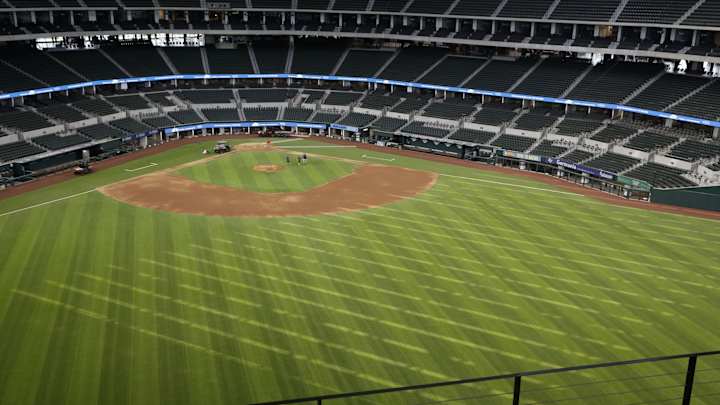Texas Rangers Are Prepared to Navigate Through Unique MLB Draft

The novel coronavirus pandemic has had a huge impact on not only the present state of baseball, but also on its future. Major League Baseball has gone through financial stress with no revenue pouring in with the 2020 season currently in limbo. Part of MLB's answer to save costs was to shorten its Amateur Draft from the standard 40 rounds down to only five.
Even amid a unique set of surreal circumstances, the Texas Rangers are preparing for the draft business as usual, but with some logistical hurdles.
"I don’t think our process has changed from what we have done in the past," said Rangers Senior Director of Amateur Scouting Kip Fagg. "Obviously a lot of things are different. Are scouts aren’t here, we are doing things by remote."
This year's five-round draft will leave a large number of players undrafted. While MLB clubs will be able to pursue an unlimited number of undrafted amateur players, they can only offer a maximum bonus of $20,000 per player.
That is only one of several restrictions each club will have to navigate this year. The Rangers are equipping themselves with a strategy built on building relationships.
"Our guys have always been the forming relationships type and that is how we have gained an edge in the past with guys who were post 10 (rounds) in the past," Fagg said. "It has’t changed with post five, we’ve kind of done the same process. It’s just a little bit more unknown, a little bit more money to play with. Now with post five it’s kind of a set thing at $20,000. We don’t really don’t know what is going to happen. If guys are going to take it or not take it."
With the limited resources—meaning money—teams have to throw at potentially signees, the Rangers will have to up their game as salesmen. The team is confident they can still sign some quality undrafted prospects.
"This is what they started playing baseball for. They wanted to play professional baseball," Fagg said. "I think you have to look at the whole landscape with college guys [perhaps sticking around] and fewer minor league teams next year, it's going to get harder to play professional baseball. With the scholarship plan still there [to give guys college scholarship money in addition to signing bonus] and the resources we have in place, I think we are going to sign a number of guys."
Part of MLB's cost-saving measures in this year's draft include temporary relief regarding signing bonuses for the players that are drafted next week. While the slot bonuses for the 2020 MLB Draft will remain the same as they were in 2019, those bonuses are deferred. Teams would pay a maximum of $100,000 in 2020, with 50 percent of the remainder in 2021, and the remaining 50 percent in 2022.
There has been concern throughout the baseball world regarding these deferments. The Rangers are still confident they can sign the players they select.
"I think just like anything else, these guys that we're talking about in that part of the draft, this is what they've been working for all their lives so to speak," Fagg said. "If they have a little of a deferred bonus, I don't think it's going to be a hindrance for them to sign. I have not heard any pushback on that at all."
Considering all the restrictions teams are facing, many expect the college players to be favored by most clubs this year. It's a safer bet that kids drafted out of college will sign and accept their deferred bonuses. Even the $20,000 signing bonus may not hinder college prospects as much as high school kids. As Kip Fagg mentioned, these kids want to play professional baseball.
There's a lot more risk regarding high school prospects. The Rangers have tended to draft more out of high school in recent history. However, they were very college heavy at the top of the 2019 draft. Of the 11 picks in the first 10 rounds last year, nine were college prospects.
The Rangers remain steadfast they are of the mindset of best player available. Given the parameters of this year's draft, it begs the question: College, high school, or best player available?
“Obviously with the way this draft is shaped, you’re going to have more comfortability with the college guys just for the fact we have history and we’ve seen them a lot more," Fagg said. "There’s always guys in a draft, especially high school kids, as you move into deeper parts prior to the draft, they pop. With some of these northern guys, we didn’t get that opportunity so it probably hurts that group of players.
"I think the college group is a little deeper this year than the high school group as a whole, so maybe you might think we’d lean that way, but there’s still a lot of good high school pitchers and players too. I believe we’re going to have opportunities on both ends."
Follow Inside The Rangers on SI on Twitter: @SITexasRangers
Like Inside The Rangers on SI on Facebook: facebook.com/SITexasRangers
Follow our Rangers insider Chris Halicke on Twitter: @ChrisHalicke
